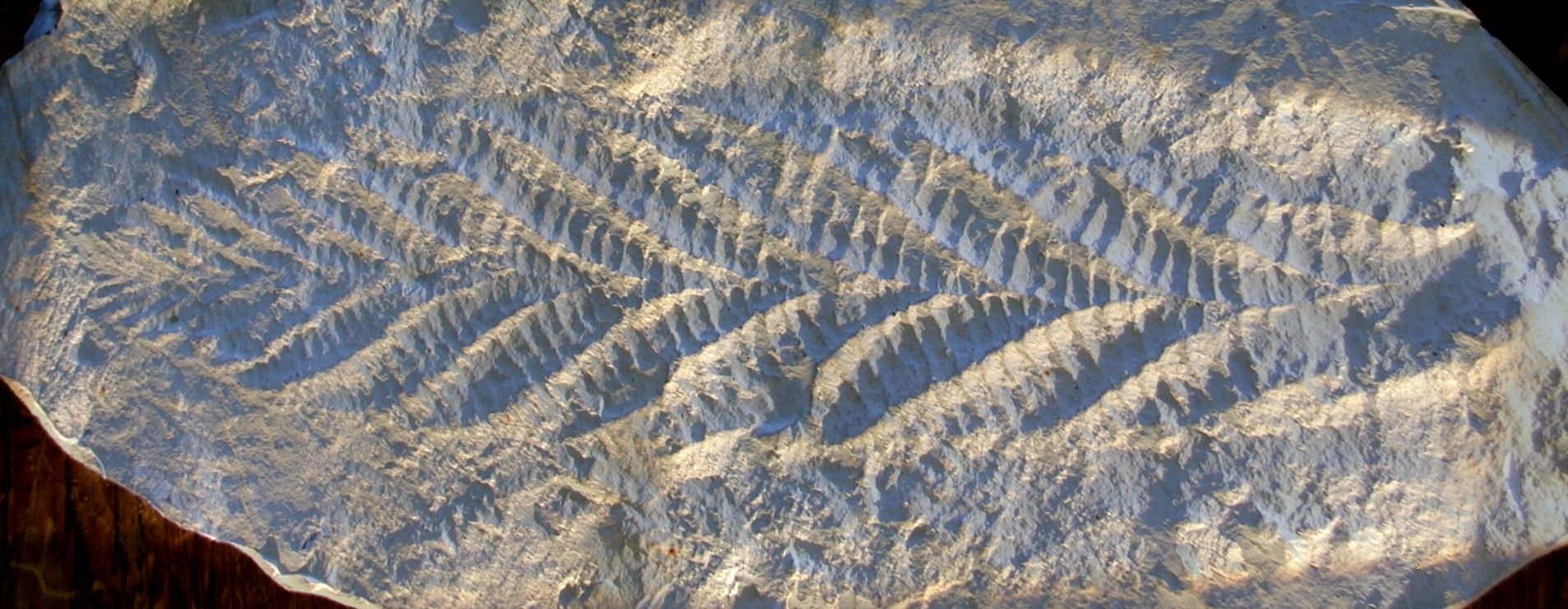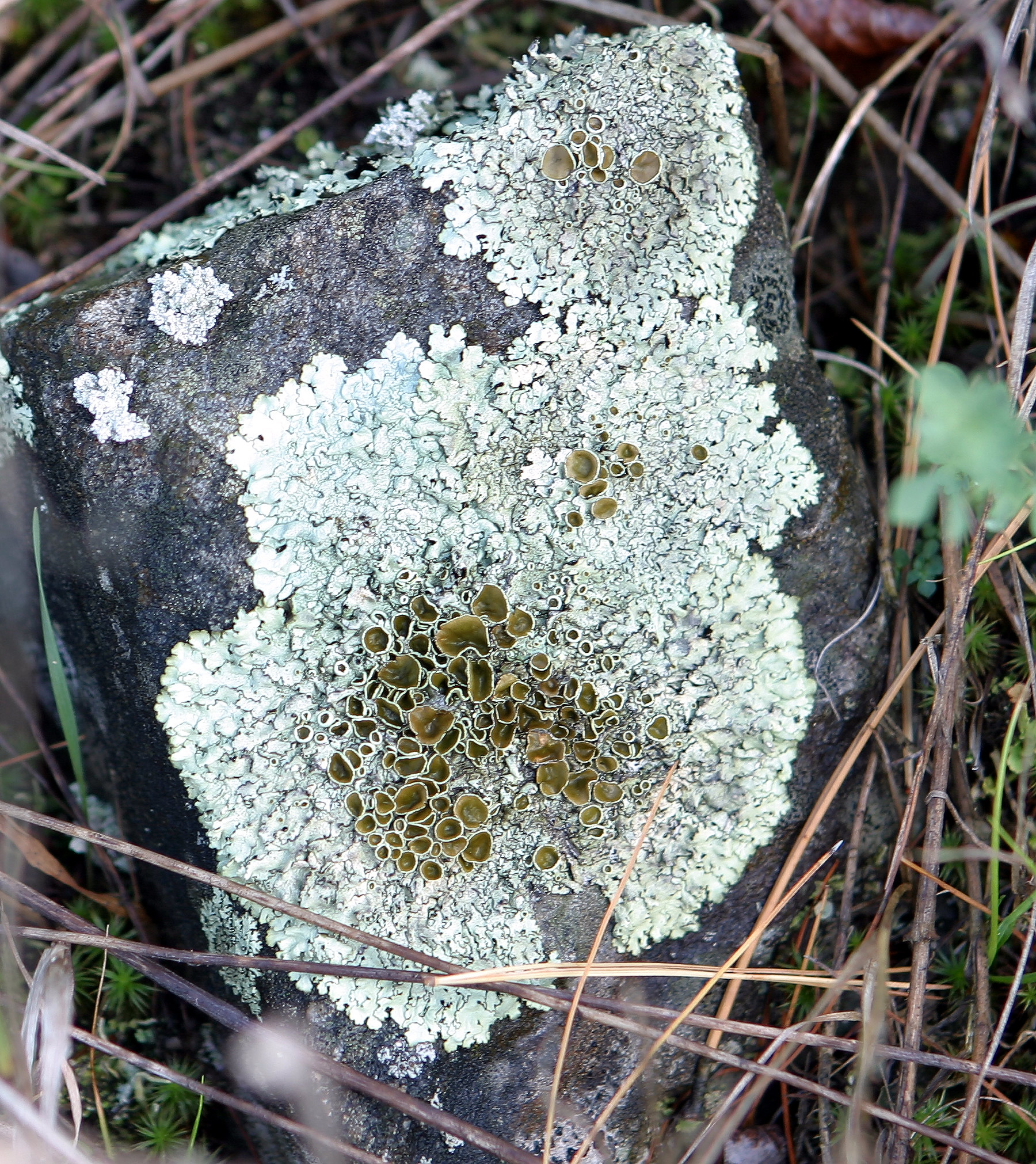|
Rutgersella
''Rutgersella truexi'' is a form species for problematic fossils of Early Silurian age in Pennsylvania. It has been of special interest because of its morphological similarity with the iconic Ediacaran fossil ''Dickinsonia'', and may have been a late surviving vendobiont. Description ''Rutgersella truexi'' is a flat, segmented fossil, with both radial and bilateral symmetry like ''Dickinsonia'', but with a shorter midline. The fossils are pyritized; some internal chambers are filled with chalcedony, so that they are preserved along with proposed "basal rhizines". Controversially, according to Retallack, these observations suggest affinities with lichens, and perhaps the fungal phylum Glomeromycota Glomeromycota (often referred to as glomeromycetes, as they include only one class, Glomeromycetes) are one of eight currently recognized division (mycology), divisions within the Kingdom (biology), kingdom Fungi, with approximately 230 describ ..., a statement not currently ... [...More Info...] [...Related Items...] OR: [Wikipedia] [Google] [Baidu] |
Shawangunk Formation
The Silurian Shawangunk Formation is a mapped bedrock unit in eastern Pennsylvania, New Jersey, and New York. It is named for the Shawangunk Ridge for which it is the dominant rock type. The division of the Shawangunk between the Tuscarora Formation and Clinton Group has not been conclusively determined. The shift of nomenclature currently has the divide between Hawk Mountain and Lehigh Gap. Description The Shawangunk is defined as a light to dark-gray, fine to very coarse grained sandstone and conglomerate, containing a few shale interbeds.Berg, T.M., Edmunds, W.E., Geyer, A.R. and others, compilers, (1980). Geologic Map of Pennsylvania: Pennsylvania Geologic Survey, Map 1, scale 1:250,000. There are also four members of this formation: Tammany, Lizard Creek, Minsi, and Weiders. The Lizard Creek member is described at Lehigh Gap as having conglomerates, sandstone, calcareous sandstone, siltstone, and shale with a few minor red beds. The Minsi Member is described as a cong ... [...More Info...] [...Related Items...] OR: [Wikipedia] [Google] [Baidu] |
Form Classification
Form classification is the classification of organisms based on their morphology, which does not necessarily reflect their biological relationships. Form classification, generally restricted to palaeontology, reflects uncertainty; the goal of science is to move "form taxa" to biological taxa whose affinity is known. Form taxonomy is restricted to fossils that preserve too few characters for a conclusive taxonomic definition or assessment of their biological affinity, but whose study is made easier if a binomial name is available by which to identify them. The term "form classification" is preferred to "form taxonomy"; taxonomy suggests that the classification implies a biological affinity, whereas form classification is about giving a name to a group of morphologically-similar organisms that may not be related. A "parataxon" (not to be confused with parataxonomy), or "sciotaxon" (Gr. "shadow taxon"), is a classification based on incomplete data: for instance, the larval stage ... [...More Info...] [...Related Items...] OR: [Wikipedia] [Google] [Baidu] |
Silurian
The Silurian ( ) is a geologic period and system spanning 23.5 million years from the end of the Ordovician Period, at million years ago ( Mya), to the beginning of the Devonian Period, Mya. The Silurian is the third and shortest period of the Paleozoic Era, and the third of twelve periods of the Phanerozoic Eon. As with other geologic periods, the rock beds that define the period's start and end are well identified, but the exact dates are uncertain by a few million years. The base of the Silurian is set at a series of major Ordovician–Silurian extinction events when up to 60% of marine genera were wiped out. One important event in this period was the initial establishment of terrestrial life in what is known as the Silurian-Devonian Terrestrial Revolution: vascular plants emerged from more primitive land plants, dikaryan fungi started expanding and diversifying along with glomeromycotan fungi, and three groups of arthropods ( myriapods, arachnids and hexapods) ... [...More Info...] [...Related Items...] OR: [Wikipedia] [Google] [Baidu] |
Pennsylvania
Pennsylvania, officially the Commonwealth of Pennsylvania, is a U.S. state, state spanning the Mid-Atlantic (United States), Mid-Atlantic, Northeastern United States, Northeastern, Appalachian, and Great Lakes region, Great Lakes regions of the United States. It borders Delaware to its southeast, Maryland to its south, West Virginia to its southwest, Ohio and the Ohio River to its west, Lake Erie and New York (state), New York to its north, the Delaware River and New Jersey to its east, and the Provinces and territories of Canada, Canadian province of Ontario to its northwest via Lake Erie. Pennsylvania's most populous city is Philadelphia. Pennsylvania was founded in 1681 through a royal land grant to William Penn, the son of William Penn (Royal Navy officer), the state's namesake. Before that, between 1638 and 1655, a southeast portion of the state was part of New Sweden, a Swedish Empire, Swedish colony. Established as a haven for religious and political tolerance, the B ... [...More Info...] [...Related Items...] OR: [Wikipedia] [Google] [Baidu] |
Ediacaran
The Ediacaran ( ) is a geological period of the Neoproterozoic geologic era, Era that spans 96 million years from the end of the Cryogenian Period at 635 Million years ago, Mya to the beginning of the Cambrian Period at 538.8 Mya. It is the last period of the Proterozoic geologic eon, Eon as well as the last of the so-called "Precambrian supereon", before the beginning of the subsequent Cambrian Period marks the start of the Phanerozoic Eon, where recognizable fossil evidence of life becomes common. The Ediacaran Period is named after the Ediacara Hills of South Australia, where trace fossils of a diverse community of previously unrecognized lifeforms (later named the Ediacaran biota) were first discovered by geologist Reg Sprigg in 1946. Its status as an official geological period was ratified in 2004 by the International Union of Geological Sciences (IUGS), making it the first new geological period declared in 120 years. Although the period took namesake from the Ediacara Hills ... [...More Info...] [...Related Items...] OR: [Wikipedia] [Google] [Baidu] |
Dickinsonia
''Dickinsonia'' is a genus of extinct organism that lived during the late Ediacaran period in what is now Australia, China, Russia, and Ukraine. It had a round, bilaterally symmetric body with multiple segments running along it. It could range from a few millimeters to over a meter in length, and likely lived in shallow waters, feeding on the microbial mats that dominated the seascape at the time. As a member of the Ediacaran biota, its relationships to other organisms has been heavily debated. It was initially proposed to be a jellyfish, and over the years has been claimed to be a land-dwelling lichen, placozoan, or even a giant protist. Currently, the most popular interpretation is that it was a seafloor dwelling animal, perhaps a primitive stem group bilaterian, although this is still contentious. Among other Ediacaran organisms, it shares a close resemblance to other segmented forms like '' Vendia'', Yorgia and '' Spriggina'' and has been proposed to be a member of the ph ... [...More Info...] [...Related Items...] OR: [Wikipedia] [Google] [Baidu] |
Vendobiont
Vendobionts or Vendozoans (Vendobionta) are a proposed very high-level, extinct clade of benthic organisms that made up of the majority of the organisms that were part of the Ediacaran biota. It is a hypothetical group. It would be the oldest of the animals that populated the Earth about 580 million years ago, in the Ediacaran period (formerly ''Vendian''). They became extinct shortly after the so-called Cambrian explosion, with the introduction of fauna forming groups more recognizably related to modern animals, however sponges may be descended from this clade. It is likely that the whole Ediacaran biota is not a monophyletic clade and not every genus placed in its subtaxa is an animal. This biological group is not widely recognized; credibility is limited by the expansive speculation needed to establish phylogenetic relationships between such ancient extinct groups. The hypothesis was formulated by the German geologist Adolf Seilacher, who even doubts its relationship wi ... [...More Info...] [...Related Items...] OR: [Wikipedia] [Google] [Baidu] |
Rhizines
In lichens, rhizines are multicellular root-like structures arising mainly from the lower surface. A lichen with rhizines is termed rhizinate, while a lichen lacking rhizines is termed erhizinate. Rhizines serve only to anchor the lichen to their substrate; they do not absorb nutrients, as plant roots do. Characteristics of the rhizines are used to identify lichens, for example, whether they are dense or sparse, uniformly distributed or clumped in specific areas, and straight or branched. Only foliose lichens may possess rhizines, not crustose or fruticose lichens, which lack a lower cortex. Rhizohyphae are a type of attachment structure on some lichens. Rhizohyphae are more slender than rhizines and are one cell thick in diameter. Rhizohyphae often occur as a felt-like hyphal mass. See also *Rhizoid Rhizoids are protuberances that extend from the lower epidermal cells of bryophytes and algae. They are similar in structure and function to the root hairs of vascular land plants ... [...More Info...] [...Related Items...] OR: [Wikipedia] [Google] [Baidu] |
Gregory Retallack
Gregory John Retallack (born 8 November 1951) is an Australian paleontologist, geologist, and author who specializes in the study of fossil soils ( paleopedology). His research has examined the fossil record of soils though major events in Earth history, extending back some 4.6 billion years. He has written two textbooks on paleopedology. Biography Retallack moved with his family from Hobart, Tasmania at age 4. He grew up in Hurstville and then Epping, in the suburbs of Sydney. He attended The King's School, Parramatta, then studied biology and paleontology at Macquarie University. He received a BSc Hons with University Medal in 1974 from the University of New England (Australia) and a PhD in 1978 in geology from the same university. After a postdoctoral fellowship at Indiana University Bloomington he joined the faculty at the University of Oregon in 1981. He was a professor in the Department of Geological Sciences since 1992, and Director of the Condon Collection of ... [...More Info...] [...Related Items...] OR: [Wikipedia] [Google] [Baidu] |
Lichen
A lichen ( , ) is a hybrid colony (biology), colony of algae or cyanobacteria living symbiotically among hypha, filaments of multiple fungus species, along with yeasts and bacteria embedded in the cortex or "skin", in a mutualism (biology), mutualistic relationship.Introduction to Lichens – An Alliance between Kingdoms . University of California Museum of Paleontology. . Lichens are the lifeform that first brought the term symbiosis (as ''Symbiotismus'') into biological context. Lichens have since been recognized as important actors in nutrient cycling and producers which many higher trophic feeders feed on, such as reindeer, gastropods, nematodes, mites, and springtails. Lichens have properties different from those of their component organisms. They come in man ... [...More Info...] [...Related Items...] OR: [Wikipedia] [Google] [Baidu] |
Glomeromycota
Glomeromycota (often referred to as glomeromycetes, as they include only one class, Glomeromycetes) are one of eight currently recognized division (mycology), divisions within the Kingdom (biology), kingdom Fungi, with approximately 230 described species. Members of the Glomeromycota form arbuscular mycorrhizas (AMs) with the thalli of bryophytes and the roots of vascular plant, vascular land plants. Not all species have been shown to form AMs, and one, ''Geosiphon pyriformis'', is known not to do so. Instead, it forms an endocytobiotic association with ''Nostoc'' cyanobacterium, cyanobacteria. The majority of evidence shows that the Glomeromycota are dependent on land plants (''Nostoc'' in the case of ''Geosiphon'') for carbon and energy, but there is recent circumstantial evidence that some species may be able to lead an independent existence. The arbuscular mycorrhizal species are terrestrial and widely distributed in soils worldwide where they form symbioses with the roots of ... [...More Info...] [...Related Items...] OR: [Wikipedia] [Google] [Baidu] |





